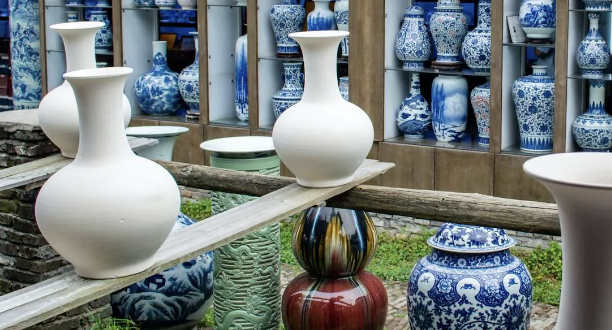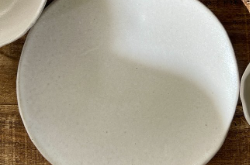During summer, I had the chance to visit Jingdezhen, the world’s porcelain capital, for a 15-day learning experience. We arrived on August 5th via high-speed rail, settling into a rented apartment just a short walk from HeXiaoNi, the porcelain school. As soon as I opened the apartment door, I was greeted by a beautiful cabinet filled with porcelain. Conveniently located in the heart of the city, there was a massive shopping mall across the street, surrounded by a variety of restaurants, giving me the perfect excuse to try something new at every meal.
The next morning, feeling both excited and a little nervous, I rented an electric scooter and made my way to the porcelain school by 9:30 a.m. Among the essentials I brought along were a cup (which turned out to be a lifesaver), an umbrella (you really need it to avoid getting sunburnt), and if you plan on recording any demonstrations from the teacher for future reference, a phone tripod might come in handy too.
Jingdezhen is filled with narrow alleyways, and we had to wind through several small, one-person-wide paths before arriving at the studio. Along the way, the air was filled with the feeling of an ancient town, with porcelain seemingly everywhere—creative ceramic necklaces, bracelets, cups, and even ceramic flowers lined the stalls we passed. I was instantly captivated by these artistic creations, making it hard to keep walking.
Upon arriving at the studio, the ground floor was dedicated to hand-molding various ceramic pieces and decorations, while the basement housed around a dozen pottery wheels neatly arranged in rows, along with an electric kiln. There was also a small room used for storing students’ works and recycling clay.
Each student prepared the basics for the wheel: a cutting wire, a sponge, a bucket of water, and a bamboo knife. We used a medium-white clay (which fires with a slight yellow tint) rather than the high-white clay (which comes out a bright white) because it’s more economical and great for practice. However, we were told we’d have plenty of chances to use different clays for our final pieces. Less than a mile away, there’s a huge market where you can buy all sorts of porcelain and pottery supplies — from porcelain clay to terracotta and even kiln bricks.
We each started by cutting a small cylindrical piece of clay, molding it into a ball, and then throwing it onto the center of the wheel, shaping it into a small mound. For beginners, it’s best to start with a smaller amount of clay as it’s easier to control. The sponge is used to clean and wet the wheel, softening the clay, while the bamboo knife scrapes off excess clay from the wheel and helps smooth out the rim of your piece.
On the first day, we focused on two key techniques: centering the clay and opening it up. Centering involves pressing down with your hands while the wheel spins, forcing the clay into a symmetrical shape in the middle of the wheel. Once centered, you gradually use your fingers to press into the mound, opening up the clay, forming the base of your future piece. At this stage, it’s not about making any final works yet — it’s all about mastering the basics. But if you happen to create something you’re really proud of, you can use a small torch to gently heat the piece as it spins and, once the surface no longer feels wet, use the cutting wire to slice it off the wheel and place it on your personal shelf for safekeeping. The teachers will assign you a dedicated spot to store your works.
There was such a diverse group of students at the studio. Some were art teachers, some math teachers, some were college students, and others had dreams of opening their own studios. We admired each other’s creations, exchanged tips, or occasionally complained about how tricky throwing a vase could be. Some students let their creativity run wild — I remember one girl, exhausted from all the work, playfully molded a hamburger out of her clay. It was so cute that everyone adored it, though our teacher warned us it might explode in the kiln since it was completely solid.
One thing I must emphasize is don’t get frustrated if your work isn’t perfect. Some of the teachers here have been doing this for over 10 years, and even their pieces aren’t flawless. What matters is the experience — feel how your muscles move, how the smooth, slippery clay glides through your fingers, how the wheel spins beneath your hands, and how your foot controls the pedal to adjust the speed of the wheel. Most importantly, enjoy the process!
 Tempus Magazine By Students, For Students
Tempus Magazine By Students, For Students 



